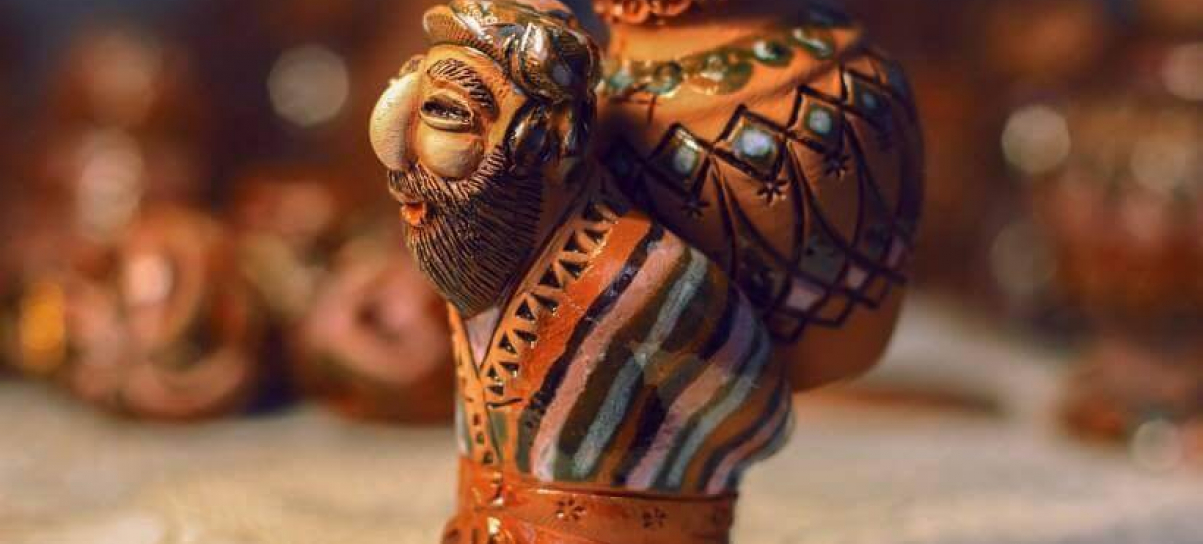Arts and Crafts in Uzbekistan

Carpet weaving - a very ancient tradition in Uzbekistan, they are mainly woven by numerous home-workers in rural areas and are perfect in technique and design.

Uzbek Tubeteika - this is the skull-cap which is one of the most popular applied art forms and is an integral part of the national costume.

Suzanei is embroidery on a decorative wall hanging with the biggest being 2-3m long and 2m wide.

Ceramics - these hold a prominent place among the numerous forms of popular applied art and the finest pieces show uncommon expressiveness and creative genius. Today, ceramic production is centred in Gizhduvan, Shakhrisabs, Samarkand, Tashkent, Rishtan and Khoresm.

Copper chasing - this is the art of decorating metal items in relief. Through the continuity of traditions from century to century, it has developed very specific aesthetic principles and high standards of artistic performance. In great demand, copper chasing served as a source for disseminating new ideas and new methods of artistic expression. Local artisans created embossed work in various metals - gold, silver, copper, bronze.

Jewellery - an Uzbek woman's life is connected with jewellery right from the moment of her birth when she receives a bracelet and earrings from her grandmother. Normally, an Uzbek woman wears forehead and chest decoration, earrings, bracelet, beads, and pendants in her plaits. Uzbek jewellers or zargars use diverse methods of traditional metal working, such as cutting, smiting, casting, chasing, engraving, plated and gilding, inlaid work, blackening and enamellings.

Weaving - the people of Central Asia did not limit themselves to simple trading, but actively participated in the production of goods particularly in silk weaving. In the second half of the 19th century, various plain and pat- terned handmade cotton fabrics, silk and semi-silk cloths with simple and intricate interlacing were made in Margilan, Namangan, Bukhara, Andijan, Samarkand, Kitab and Urgut. Wool, flax, cotton and silk were used as raw materials in Central Asia. They were also used to adorn dwellings and for clothers. The most attractive aspect of Uzbek fabrics is the beauty of their colours and the pure dyes which are applied in delicate combinations.

Embroidery - it can be ornamental or gold in nature. Ornamental embroidery supplemented other kinds of architectural and decorative art such as gunch (plaster) and wood-carving and embroidered articles widely adorned dwellings and small household articles as well as in every day and festive clothing. Local artistic styles eventually developed. In the 19th century Bukhara, Nurata, Shakhrisabz, Samarkand, Jizak, Tashkent, Pskent and Fergana were major centers of embroidery. Ornamental embroidery is exclusively women's art. Gold embroidery was extensively developed in Bukhara in the 19th century. The magnificent articles of the Emir's court and the custom of presenting robes of great value led to orders being placed on a large scale. It was mainly done on velvet, chamois leather and wool and seldom on silk. Unlike ornamental embroidery, gold embroidery was performed solely by men as popular belief stated that the golden thread would turn black if a woman touched it.
Pearl of the East with Central Asia tours
We recommend to see more:
Follow us on
Sign up for our newsletters
Find our latest discounted tours, updated itineraries and latest news about the region



